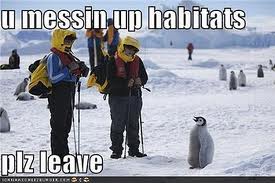
Specimens of the greater bird of paradise are among those filtering into the trade
The Solomon Islands has become a hub for “laundering” wild birds into the global captive-bred bird trade, says the wildlife trade watchdog Traffic.
Thousands of parrots, cockatoos and other exotic birds have been exported over the last 10 years, they report.
But officials say there are no major captive breeding units in the islands.
The Solomons recently joined CITES, the global wildlife trade convention, which sets different conditions for trading captive-bred and wild animals.
“Declaring exported birds as being captive-bred has all the hallmarks of a scam to get around international trade regulations,” said Chris Shepherd, Traffic’s deputy director for Southeast Asia.
Some of the 35 bird species exported from the Solomons are on the internationally recognised Red List of Threatened Species.
They include the Critically Endangered yellow-crested cockatoo (Cacatua sulphurea), and the chattering lory (Lorius garrulus) and blue bird of paradise (Paradisaea rudolphi), which are both categorised as Vulnerable.
Under CITES – the Convention on International Trade in Endangered Species – all trade in the yellow-crested cockatoo is banned.
For the others, exports of wild-caught birds are strictly regulated.
Destination Asia
Using records from importing countries, Traffic investigators calculated that about 54,000 birds were exported from the Solomons in the period 2000-2010.
 Cages are full of birds such as the Cardinal Lory (L), but whether breeding takes place is unclear
Cages are full of birds such as the Cardinal Lory (L), but whether breeding takes place is unclearMore than 40,000 of these were declared as captive-bred.
Most belong to species native to the Solomons, but more than 13,000 came from non-native species, mainly originating in Indonesia and Papua New Guinea.
But Traffic could find no records of these species being imported into the Solomons, either for re-export or to begin a captive breeding programme.
An official from the government’s Environment Conservation Division told investigators: “There are no breeding facilities, only some confusion with storing facilities.
“Most of the exported birds were captured and kept in holding sites only.”
The main destinations for the birds were Malaysia and Singapore.
 Source: BBC News Read more
Source: BBC News Read more
Where are the Solomon Islands?





















Recent Comments